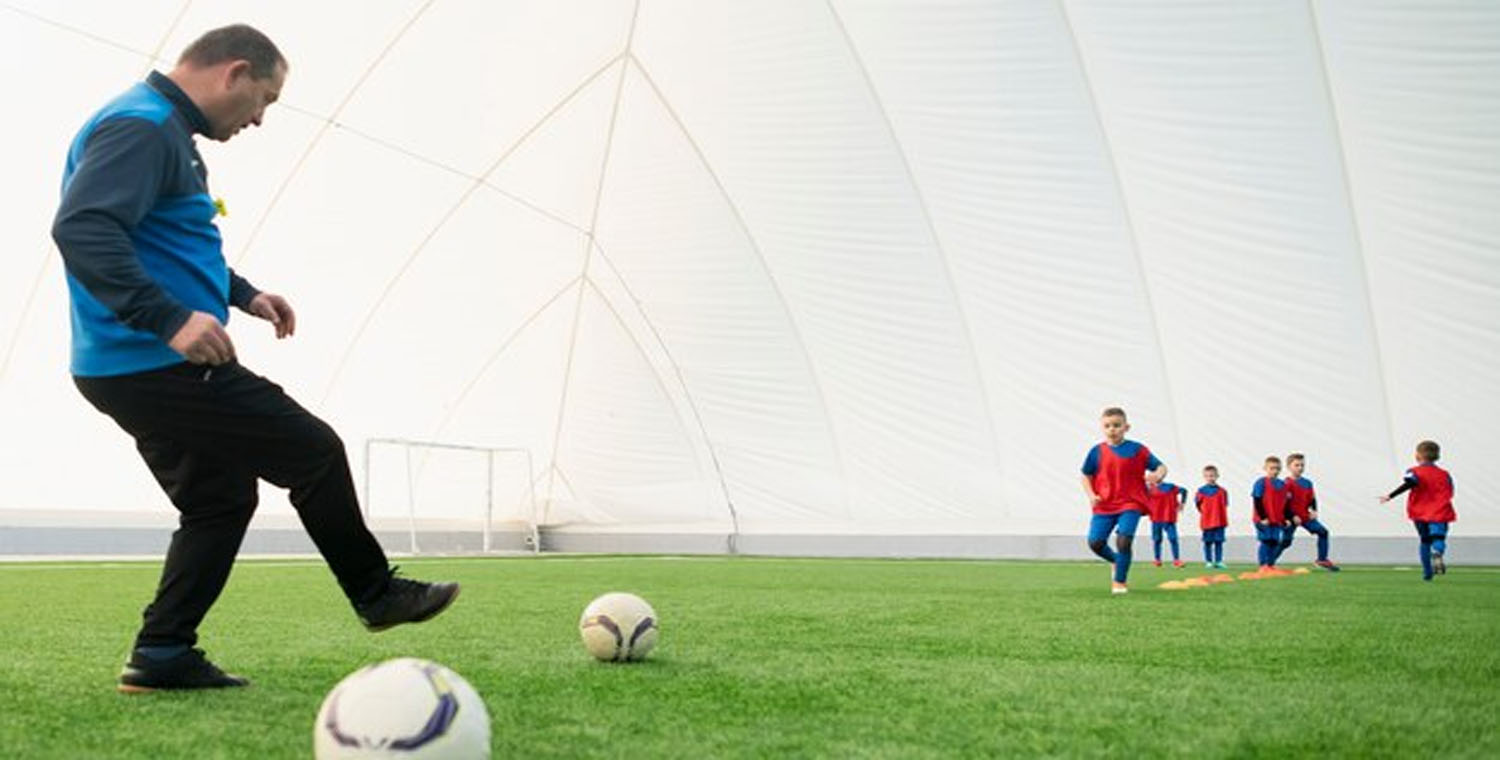Blog
Jack Doherty Net Worth: An Insight into the Young YouTube Sensation

Jack Doherty has rapidly become a notable name in the realm of social media and entertainment, particularly through his engaging YouTube channel. Known for his playful personality and entertaining content, he has amassed a significant following and, with it, considerable financial success. In this article, we will explore Jack Doherty career, his rise to fame, and ultimately, his net worth.
Early Life and Background

Jack Doherty was born on October 8, 2001, in [insert hometown or city], where he grew up with a passion for creativity and entertainment. From a young age, he displayed an affinity for performing and engaging with others. This natural inclination toward entertainment would eventually lead him to explore various platforms to showcase his talents.
Growing up, Jack was inspired by many YouTubers and social media influencers, which motivated him to start his own channel. With a keen sense of humor and a flair for creativity, he began posting videos that resonated with a youthful audience.
Career Beginnings
Jack launched his YouTube channel in [insert year], initially focusing on [insert early content focus, e.g., challenges, vlogs, skits]. His first few videos showcased his fun-loving nature and ability to entertain, quickly attracting viewers who appreciated his unique style.
Early Success and Growth
As his subscriber count began to rise, Jack started experimenting with different types of content, including pranks, challenges, and lifestyle vlogs. His versatility and willingness to adapt to trends played a crucial role in his growing popularity. Collaborations with fellow YouTubers also helped boost his visibility, further expanding his audience.
By consistently uploading engaging content and interacting with his followers, Jack Doherty solidified his presence in the YouTube community. His genuine personality and relatability endeared him to viewers, allowing him to cultivate a loyal fanbase.
Jack Doherty’s Rise to Fame
Jack’s content continued to evolve as he gained more subscribers. He became known for his creative challenges and humorous take on everyday situations, which resonated well with his audience.
Viral Videos
Some of Jack’s videos have gone viral, significantly contributing to his fame. [Mention specific viral videos or trends he participated in.] These viral moments not only boosted his subscriber count but also increased his engagement rates, making him a sought-after influencer in the space.
Social Media Presence
Beyond YouTube, Jack Doherty has also established a strong presence on other social media platforms, including Instagram, TikTok, and Twitter. His multi-platform approach has enabled him to reach a broader audience and engage with fans in various ways. By sharing snippets of his life and creative process, he maintains a connection with his followers, who are eager to see what he will do next.
Jack Doherty’s Net Worth
As of 2024, Jack Doherty’s net worth is estimated to be around [insert estimated figure, e.g., $1 million]. This figure reflects his income from various sources, including his YouTube channel, brand partnerships, and merchandise sales.
Breakdown of Income Sources
- YouTube Ad Revenue: A significant portion of Jack’s income comes from ad revenue generated through his YouTube videos. With millions of views per video, the earnings from advertisements can accumulate rapidly.
- Brand Collaborations: Jack Doherty has collaborated with various brands for promotional content and sponsorships. These partnerships often involve creating tailored content that resonates with his audience while promoting products or services.
- Merchandise Sales: Like many successful YouTubers, Jack has launched his own line of merchandise, which includes apparel and accessories. The sales from these products contribute to his overall net worth and allow his fans to connect with him on a more personal level.
- Social Media Influencer: Jack’s influence extends to other platforms, where he often partners with brands for sponsored posts, further adding to his income.
Lifestyle and Personal Life
Despite his rising fame, Jack Doherty has managed to maintain a relatively down-to-earth lifestyle. He often shares glimpses of his life with his fans, giving them a sense of connection beyond just his videos.
Interests and Hobbies
In addition to creating content, Jack has a variety of interests, including [insert hobbies, e.g., sports, gaming, music]. He often incorporates these interests into his videos, making them relatable and enjoyable for his audience. His genuine enthusiasm for life is infectious, drawing viewers in and fostering a sense of community.
Philanthropy
As his net worth grows, Jack Doherty has shown a commitment to giving back. He has been involved in various charitable efforts, often using his platform to raise awareness for important causes. This dedication to philanthropy not only reflects his values but also sets a positive example for his followers.
The Future of Jack Doherty
Looking ahead, Jack Doherty is poised for continued success in the entertainment industry. His ability to adapt to trends and engage with his audience will be critical as he explores new opportunities.
Expanding His Brand
As his career evolves, Jack may choose to expand his brand beyond YouTube and social media. Potential ventures could include [insert potential ventures, e.g., television, film, music]. His versatility and creativity make him a prime candidate for various entertainment avenues.
Potential Challenges
While Jack has achieved significant success, he also faces the challenges that come with being a public figure. Navigating the pressures of fame, staying relevant in a fast-paced industry, and managing his personal life will be crucial as he moves forward. However, his resilience and adaptability suggest that he is well-equipped to handle these challenges.
Conclusion
Jack Doherty’s journey from a budding content creator to a prominent YouTube personality is a testament to his hard work and creativity. With an estimated net worth of [insert estimated figure] in 2024, he stands as a shining example of what can be achieved through dedication and passion. As he continues to entertain and inspire, Jack’s story serves as an inspiration for aspiring creators and fans alike, proving that with determination, anything is possible.
More Read
Nyogymbace: The Ultimate Guide to Understanding Its Benefits and Usage
Blog
Wowza Gradle: A Comprehensive Guide to Efficient Streaming Management

In the world of live video streaming, efficiency and flexibility are paramount. The demand for real-time media delivery solutions is growing, and content providers need to ensure they are using the most effective tools to manage and optimize their streaming workflows. One such powerful tool is Wowza Gradle, a software framework that streamlines the development, configuration, and management of media streaming applications.
This article will explore what Wowza Gradle is, its benefits, how it works, and how developers can integrate it into their projects for seamless video streaming management. If you’re looking for ways to optimize your media workflows, this is the guide you need.
What is Wowza Gradle?

Wowza Gradle is an open-source automation tool designed to work with the Wowza Streaming Engine. It simplifies the process of automating tasks in the video streaming workflow, particularly for developers and businesses that require constant deployment, testing, and integration of live streaming applications.
Gradle, in general, is a build automation tool commonly used in Java applications. When paired with Wowza, it enables efficient management of dependencies, configuration, and execution tasks related to the Wowza Streaming Engine. Essentially, Wowza Gradle is a plugin for Gradle that allows seamless integration between Wowza Streaming Engine and your development environment.
Gradle, known for its versatility and speed, allows developers to automate complex tasks and integrate them into a continuous integration (CI) pipeline. When it comes to video streaming, Wowza Gradle makes it easier to work with media files, configure Wowza settings, deploy applications, and even test them automatically, reducing manual overhead and minimizing errors.
Key Features of Wowza Gradle
1. Streamlined Workflow Management
One of the main advantages of using Wowza Gradle is its ability to streamline your entire workflow. With Gradle’s powerful task management and dependency handling capabilities, developers can automate everything from building and packaging to deploying and configuring their Wowza Streaming Engine applications.
2. Simplified Configuration
Working with Wowza Streaming Engine often involves dealing with complex configurations for live streaming, on-demand video delivery, transcoding, and DRM settings. Wowza Gradle helps developers by automating much of the setup process, ensuring that everything is correctly configured without manual intervention.
3. Seamless Integration with Continuous Integration Tools
Integrating Wowza Streaming Engine into a CI/CD pipeline is a common requirement for many businesses. Wowza Gradle makes it easy to include video streaming capabilities in your build process. This can be particularly useful when you need to continuously test, deploy, or update media applications.
4. Dependency Management
Dependencies are critical in development environments, especially when working with large, complex projects. Gradle excels in managing these dependencies, ensuring that the necessary files and libraries are always available when needed. With Wowza Gradle, developers can manage Wowza-related dependencies alongside other application dependencies, making the entire development process smoother.
5. Efficient Media Processing
For those involved in video transcoding or live streaming, Wowza Gradle offers a range of tools to automate and manage video encoding tasks. Developers can use it to set up media transcoding workflows, ensuring that video streams are delivered in the right formats and resolutions for different devices and network conditions.
Benefits of Using Wowza Gradle for Streaming Solutions
1. Increased Development Efficiency
By automating repetitive tasks, Wowza Gradle reduces the need for manual intervention in video streaming workflows. This leads to faster development cycles, fewer human errors, and more time spent on building innovative features rather than managing configuration files.
2. Enhanced Flexibility
Whether you’re working on a single-stream application or a multi-channel platform, Wowza Gradle provides the flexibility to customize your streaming workflows. It gives you the ability to create custom tasks, modify settings, and integrate with other services easily.
3. Scalability
As your streaming platform grows, so do your development and deployment needs. Wowza Gradle is designed to scale, enabling developers to handle large-scale streaming applications without performance issues. Its efficient handling of dependencies and integration with cloud-based environments makes it ideal for businesses planning to scale up their operations.
4. Improved Performance
With automation and dependency management, Wowza Gradle ensures that your applications perform at their best. Whether it’s optimizing server configurations or managing transcoding tasks, this tool ensures that your media workflows are efficient and performance-oriented.
5. Cost-Efficient
By reducing the need for manual configuration and streamlining workflows, Wowza Gradle can help reduce operational costs. Developers can focus on writing high-value code and implementing innovative features rather than spending time on routine tasks.
How Does Wowza Gradle Work?
At its core, Wowza Gradle works by providing a set of plugins that interact with Wowza Streaming Engine, automating tasks that would normally require manual configuration. These tasks can include anything from setting up encoding profiles to managing security protocols and deploying live streams.
To use Wowza Gradle, you need to:
- Install Gradle: First, you need to have Gradle installed on your local development environment.
- Integrate Wowza Gradle Plugin: Add the Wowza Gradle plugin to your project configuration. This plugin connects Gradle with Wowza Streaming Engine.
- Create Gradle Tasks: Once the plugin is integrated, you can create custom Gradle tasks that automate the configuration and deployment of your Wowza Streaming Engine application.
- Automate Deployment: With your tasks set up, you can automate the deployment of your streaming platform to your server or cloud environment, ensuring a smooth, error-free launch process.
Best Practices for Implementing Wowza Gradle
1. Use Version Control for Gradle Files
When using Wowza Gradle in your project, always ensure that your Gradle build files are under version control. This allows your team to track changes, roll back to previous versions, and collaborate more effectively on streaming projects.
2. Leverage Gradle Wrapper
The Gradle Wrapper is a tool that ensures your project uses a specific version of Gradle. It eliminates the need for developers to manually install Gradle and makes the setup process simpler for team members. It’s a great idea to use the wrapper when working with Wowza Gradle to ensure consistency across all environments.
3. Automate Testing
A major advantage of using Wowza Gradle is its integration with continuous integration systems. Automating your tests ensures that every code change is validated before being deployed. Incorporate unit tests for your Wowza configurations and media workflows to avoid issues in production.
4. Optimize for Performance
Media delivery and streaming are resource-intensive tasks. Make sure to optimize your Wowza Streaming Engine settings for performance. Use Gradle to automate scaling tasks, optimize encoding profiles, and ensure that your video streams deliver the best possible quality to end-users.
5. Monitor Streaming Performance
Use Wowza’s analytics tools and integrate them into your Gradle tasks to monitor streaming performance. By collecting data on stream health and viewer metrics, you can make adjustments to your configurations, ensuring smooth, high-quality broadcasts.
Common Use Cases for Wowza Gradle
1. Live Event Streaming
If you’re managing a live event stream, Wowza Gradle can help automate the deployment and configuration of your streaming application. From encoding to deployment and testing, Gradle simplifies the entire process, ensuring that your event runs smoothly from start to finish.
2. VOD Platforms
For Video on Demand (VOD) platforms, Wowza Gradle can automate the process of transcoding and configuring video streams for different resolutions and formats. This ensures that content is delivered optimally, no matter what device or network a viewer is using.
3. Multi-Channel Streaming
For platforms offering multiple channels or streams, Wowza Gradle can streamline the configuration and management of each individual stream. Automate the task of managing streaming profiles, access controls, and redundancy strategies for each channel, ensuring that each stream functions seamlessly.
4. Cloud-Based Streaming Solutions
In the cloud, you may need to deploy your Wowza Streaming Engine on a variety of environments. Wowza Gradle integrates with cloud platforms like AWS, Google Cloud, and Azure, allowing developers to easily configure cloud-based streaming setups, automate deployments, and scale operations on-demand.
Conclusion
Wowza Gradle is an invaluable tool for developers and businesses involved in media streaming. It helps automate repetitive tasks, streamline workflows, and improve the scalability, performance, and efficiency of video streaming applications. Whether you’re building live event streaming solutions, VOD platforms, or multi-channel services, Wowza Gradle offers the flexibility and control you need to succeed in a competitive landscape.
Blog
Remise en Question: The Importance of Self-Reflection

Self-reflection, or remise en question as it is known in French, plays a pivotal role in personal development and growth. It is the process of questioning one’s own beliefs, decisions, and actions to gain a deeper understanding of oneself. This act of introspection helps individuals identify areas for improvement, redefine their goals, and realign their values with their actions. In both personal and professional contexts, remise en question leads to better decision-making, enhanced problem-solving skills, and increased emotional intelligence. Understanding the synonyms and various ways to describe this process can enrich our vocabulary and deepen our understanding of this critical concept.
In this article, we will explore the concept of remise en question (questioning oneself), its significance, and its impact on personal growth. We will also delve into the various synonyms of this term and how they reflect the multifaceted nature of self-reflection. Understanding these nuances can help individuals embrace the practice of self-reflection more fully and develop a greater sense of self-awareness.
What is “Remise en Question”?

“Remise en question” is a French term that can be translated to “questioning oneself” or “re-evaluating” in English. It refers to the act of critically examining one’s beliefs, actions, and perspectives. In essence, it is the process of taking a step back and assessing whether your thoughts or decisions align with your values, goals, and circumstances.
Engaging in remise en question is essential for personal growth because it encourages individuals to question the status quo, seek improvement, and challenge preconceived notions. This process leads to greater self-awareness and can inspire positive changes in behavior, mindset, and lifestyle.
In many cases, remise en question happens after moments of personal failure or dissatisfaction, but it can also occur after successes when one seeks to find new ways to improve. The willingness to engage in this self-reflection process is essential for adapting to life’s challenges and continuously evolving as a person.
Synonyms of “Remise en Question”
The concept of questioning oneself is not limited to just one term. In fact, various synonyms and phrases can be used to convey different aspects of remise en question. Each synonym reflects a different angle of self-reflection and its impact on personal growth. Below, we will explore some of the most common synonyms and their meanings:
1. Self-Examination
Self-examination is one of the closest synonyms to remise en question, as it involves scrutinizing one’s own thoughts, feelings, and actions. It is often used in the context of moral or ethical reflection. Individuals who engage in self-examination assess their values, decisions, and behavior in order to determine whether they align with their personal standards and ideals. This process can be an ongoing practice of evaluating oneself and one’s actions.
For example, after a conflict at work, a person may engage in self-examination to understand their own role in the situation and identify areas where they could have responded differently. Self-examination helps individuals identify areas for improvement and move toward positive change.
2. Introspection
Introspection is another synonym for remise en question and is often used interchangeably with self-reflection. Introspection refers to the process of looking inward to observe and analyze one’s own thoughts and feelings. It involves a deeper level of introspective thinking and an awareness of how one’s mind works.
Introspection can be particularly valuable for understanding the underlying reasons behind certain behaviors and thought patterns. For example, when someone is struggling with anxiety, introspection might help them understand the root causes of their worry and identify ways to cope with those emotions.
3. Self-Assessment
Self-assessment is a process through which individuals evaluate their own skills, strengths, and weaknesses. It is often used in professional settings to gauge one’s performance or to assess progress toward a goal. This synonym of remise en question involves reflecting on past actions or behaviors and measuring them against a set of criteria or objectives.
For example, after completing a project at work, you might engage in self-assessment to determine what went well and what could be improved for next time. By assessing your own abilities, you gain valuable insights into your personal development and can set new goals to enhance your skills.
4. Self-Criticism
Self-criticism involves examining one’s own actions or thoughts with a focus on identifying mistakes or shortcomings. Unlike constructive self-reflection, which is aimed at improving oneself, self-criticism often involves a more judgmental or negative approach to self-reflection. While some self-criticism is necessary for growth, excessive self-criticism can lead to feelings of guilt, shame, or low self-esteem.
When engaging in remise en question, it is important to differentiate between productive self-criticism and unproductive negative self-talk. Constructive self-criticism helps an individual recognize areas for growth without falling into a negative spiral of self-doubt.
5. Reevaluation
Reevaluation is another term that closely resembles remise en question. It involves reconsidering or reassessing one’s decisions, goals, or strategies. Reevaluating is often done when there are significant changes in circumstances or when previous plans no longer seem relevant or effective.
For instance, if someone’s life situation changes, such as moving to a new city or starting a new career, they might engage in reevaluation to assess whether their current goals align with their new circumstances. Reevaluation allows individuals to adjust their plans and priorities to better reflect their current needs.
6. Contemplation
Contemplation is a synonym of remise en question that refers to deep, reflective thinking. It often involves careful thought about one’s life, decisions, and experiences. Contemplation can be a more philosophical or spiritual process in which an individual reflects on the meaning and purpose of their existence.
For example, someone might engage in contemplation when considering major life decisions, such as whether to change careers or move to a new location. By contemplating their options, individuals are better equipped to make thoughtful, informed choices.
7. Soul-Searching
Soul-searching is a term often used to describe the act of deep introspection and questioning one’s life purpose, values, and direction. It involves reflecting on the meaning of life, personal motivations, and existential concerns. Soul-searching is often done in response to a major life event, such as a loss or crisis, but it can also occur at times when one seeks greater meaning or understanding.
Through soul-searching, individuals may gain clarity about their desires and goals, leading them to make life changes or take new paths in pursuit of personal fulfillment.
The Role of “Remise en Question” in Personal Growth
Engaging in remise en question is crucial for personal growth and self-improvement. By questioning your assumptions, beliefs, and decisions, you open the door to new perspectives and insights. The process of self-reflection encourages personal accountability and empowers individuals to make informed, intentional choices.
The benefits of self-reflection and questioning oneself are vast. For example, self-reflection can improve emotional intelligence by helping individuals become more aware of their emotions and how they influence behavior. It can also enhance problem-solving abilities by allowing individuals to step back from a situation and view it from multiple angles.
Additionally, remise en question can foster resilience. When individuals regularly assess their decisions and learn from their mistakes, they build the mental flexibility needed to adapt to change and overcome adversity.
In a professional setting, engaging in remise en question can lead to better leadership and decision-making. By reflecting on their own actions and leadership style, managers and executives can identify areas where they can improve and build stronger, more effective teams.
Conclusion
The practice of remise en question, or questioning oneself, is essential for growth and personal development. By engaging in self-reflection, individuals can gain clarity about their goals, values, and behaviors. Synonyms of this term, such as self-examination, introspection, and reevaluation, each reflect different aspects of the self-reflection process, but they all share the common goal of helping individuals understand themselves better.
Through regular questioning of one’s own actions and beliefs, individuals can improve their emotional intelligence, make better decisions, and achieve greater personal fulfillment. Whether in moments of success or failure, remise en question provides an opportunity to learn, grow, and become a more thoughtful, aware person. By embracing this process, individuals open themselves up to a lifetime of self-discovery and improvement.
Self-reflection, or remise en question as it is known in French, plays a pivotal role in personal development and growth. It is the process of questioning one’s own beliefs, decisions, and actions to gain a deeper understanding of oneself. This act of introspection helps individuals identify areas for improvement, redefine their goals, and realign their values with their actions. In both personal and professional contexts, remise en question leads to better decision-making, enhanced problem-solving skills, and increased emotional intelligence. Understanding the synonyms and various ways to describe this process can enrich our vocabulary and deepen our understanding of this critical concept.
In this article, we will explore the concept of remise en question (questioning oneself), its significance, and its impact on personal growth. We will also delve into the various synonyms of this term and how they reflect the multifaceted nature of self-reflection. Understanding these nuances can help individuals embrace the practice of self-reflection more fully and develop a greater sense of self-awareness.
What is “Remise en Question”?
“Remise en question” is a French term that can be translated to “questioning oneself” or “re-evaluating” in English. It refers to the act of critically examining one’s beliefs, actions, and perspectives. In essence, it is the process of taking a step back and assessing whether your thoughts or decisions align with your values, goals, and circumstances.
Engaging in remise en question is essential for personal growth because it encourages individuals to question the status quo, seek improvement, and challenge preconceived notions. This process leads to greater self-awareness and can inspire positive changes in behavior, mindset, and lifestyle.
In many cases, remise en question happens after moments of personal failure or dissatisfaction, but it can also occur after successes when one seeks to find new ways to improve. The willingness to engage in this self-reflection process is essential for adapting to life’s challenges and continuously evolving as a person.
Synonyms of “Remise en Question”

The concept of questioning oneself is not limited to just one term. In fact, various synonyms and phrases can be used to convey different aspects of remise en question. Each synonym reflects a different angle of self-reflection and its impact on personal growth. Below, we will explore some of the most common synonyms and their meanings:
1. Self-Examination
Self-examination is one of the closest synonyms to remise en question, as it involves scrutinizing one’s own thoughts, feelings, and actions. It is often used in the context of moral or ethical reflection. Individuals who engage in self-examination assess their values, decisions, and behavior in order to determine whether they align with their personal standards and ideals. This process can be an ongoing practice of evaluating oneself and one’s actions.
For example, after a conflict at work, a person may engage in self-examination to understand their own role in the situation and identify areas where they could have responded differently. Self-examination helps individuals identify areas for improvement and move toward positive change.
2. Introspection
Introspection is another synonym for remise en question and is often used interchangeably with self-reflection. Introspection refers to the process of looking inward to observe and analyze one’s own thoughts and feelings. It involves a deeper level of introspective thinking and an awareness of how one’s mind works.
Introspection can be particularly valuable for understanding the underlying reasons behind certain behaviors and thought patterns. For example, when someone is struggling with anxiety, introspection might help them understand the root causes of their worry and identify ways to cope with those emotions.
3. Self-Assessment
Self-assessment is a process through which individuals evaluate their own skills, strengths, and weaknesses. It is often used in professional settings to gauge one’s performance or to assess progress toward a goal. This synonym of remise en question involves reflecting on past actions or behaviors and measuring them against a set of criteria or objectives.
For example, after completing a project at work, you might engage in self-assessment to determine what went well and what could be improved for next time. By assessing your own abilities, you gain valuable insights into your personal development and can set new goals to enhance your skills.
4. Self-Criticism
Self-criticism involves examining one’s own actions or thoughts with a focus on identifying mistakes or shortcomings. Unlike constructive self-reflection, which is aimed at improving oneself, self-criticism often involves a more judgmental or negative approach to self-reflection. While some self-criticism is necessary for growth, excessive self-criticism can lead to feelings of guilt, shame, or low self-esteem.
When engaging in remise en question, it is important to differentiate between productive self-criticism and unproductive negative self-talk. Constructive self-criticism helps an individual recognize areas for growth without falling into a negative spiral of self-doubt.
5. Reevaluation
Reevaluation is another term that closely resembles remise en question. It involves reconsidering or reassessing one’s decisions, goals, or strategies. Reevaluating is often done when there are significant changes in circumstances or when previous plans no longer seem relevant or effective.
For instance, if someone’s life situation changes, such as moving to a new city or starting a new career, they might engage in reevaluation to assess whether their current goals align with their new circumstances. Reevaluation allows individuals to adjust their plans and priorities to better reflect their current needs.
6. Contemplation
Contemplation is a synonym of remise en question that refers to deep, reflective thinking. It often involves careful thought about one’s life, decisions, and experiences. Contemplation can be a more philosophical or spiritual process in which an individual reflects on the meaning and purpose of their existence.
For example, someone might engage in contemplation when considering major life decisions, such as whether to change careers or move to a new location. By contemplating their options, individuals are better equipped to make thoughtful, informed choices.
7. Soul-Searching
Soul-searching is a term often used to describe the act of deep introspection and questioning one’s life purpose, values, and direction. It involves reflecting on the meaning of life, personal motivations, and existential concerns. Soul-searching is often done in response to a major life event, such as a loss or crisis, but it can also occur at times when one seeks greater meaning or understanding.
Through soul-searching, individuals may gain clarity about their desires and goals, leading them to make life changes or take new paths in pursuit of personal fulfillment.
The Role of “Remise en Question” in Personal Growth

Engaging in remise en question is crucial for personal growth and self-improvement. By questioning your assumptions, beliefs, and decisions, you open the door to new perspectives and insights. The process of self-reflection encourages personal accountability and empowers individuals to make informed, intentional choices.
The benefits of self-reflection and questioning oneself are vast. For example, self-reflection can improve emotional intelligence by helping individuals become more aware of their emotions and how they influence behavior. It can also enhance problem-solving abilities by allowing individuals to step back from a situation and view it from multiple angles.
Additionally, remise en question can foster resilience. When individuals regularly assess their decisions and learn from their mistakes, they build the mental flexibility needed to adapt to change and overcome adversity.
In a professional setting, engaging in remise en question can lead to better leadership and decision-making. By reflecting on their own actions and leadership style, managers and executives can identify areas where they can improve and build stronger, more effective teams.
Conclusion
The practice of remise en question, or questioning oneself, is essential for growth and personal development. By engaging in self-reflection, individuals can gain clarity about their goals, values, and behaviors. Synonyms of this term, such as self-examination, introspection, and reevaluation, each reflect different aspects of the self-reflection process, but they all share the common goal of helping individuals understand themselves better.
Through regular questioning of one’s own actions and beliefs, individuals can improve their emotional intelligence, make better decisions, and achieve greater personal fulfillment. Whether in moments of success or failure, remise en question provides an opportunity to learn, grow, and become a more thoughtful, aware person. By embracing this process, individuals open themselves up to a lifetime of self-discovery and improvement.
Also Visit: Foot en Salle: The Growing Popularity of Indoor Soccer
Acclamer Définition: Understanding the Power of Applause and Acclaim
Prague Workation: The Ultimate Guide to Working Remotely in the Czech Capital
Cat Breeder Byron: Your Guide to Finding the Perfect Feline Companion
Blog
Foot en Salle: The Growing Popularity of Indoor Soccer

Foot en salle,” or indoor soccer, is a fast-paced, exciting version of traditional soccer (football) played indoors, usually on a smaller, hard court. Known globally as futsal, the sport has been gaining popularity due to its unique style of play, emphasis on skill, and the advantages of being able to play regardless of weather conditions. Futsal combines the technical aspects of soccer with a more intense, skill-based environment, making it an ideal game for players of all ages.
Whether you’re a soccer enthusiast, a professional athlete, or someone simply looking for an exciting recreational activity, foot en salle offers a range of benefits and opportunities. In this article, we will explore the origins of futsal, the rules that define it, the benefits it offers players, and its rising popularity across the globe.
What is Foot en Salle (Futsal)?

“Foot en salle” (French for “indoor football”) is a term used in France and some other French-speaking countries to refer to futsal, which is the internationally recognized name for the indoor version of soccer. The game is typically played on a hard court smaller than a standard soccer field, with teams of five players each. Unlike traditional soccer, futsal is usually played with a smaller, heavier ball, which encourages more control and precision when passing and shooting.
The sport was developed in the 1930s in Uruguay by Juan Carlos Ceriani, who created futsal as a way to allow young people to play soccer indoors, especially in urban areas with limited space for outdoor soccer fields. Over time, futsal spread throughout South America and eventually to the rest of the world, where it gained recognition as a separate but complementary version of soccer.
Futsal is governed by specific rules, which set it apart from soccer. While the primary goal is the same—to score more goals than the opposing team—the nature of the game is more technical. Players are encouraged to use quick thinking, sharp dribbling, and precise ball control, which leads to a faster-paced and often more dynamic version of soccer.
The Rules of Foot en Salle
Futsal shares many similarities with traditional soccer but also has several key differences. Here are some of the main rules that distinguish foot en salle from regular soccer:
1. Small Playing Area
A futsal court is significantly smaller than a traditional soccer field, typically measuring between 25 to 42 meters in length and 16 to 25 meters in width. This smaller playing area forces players to be more creative and skillful with their movements, as there is less space to operate.
2. Five Players per Team
Each futsal team consists of five players, including a goalkeeper. The reduced number of players means more action, as every player is involved in both offensive and defensive plays. There is also a greater emphasis on teamwork, with quick passes and off-the-ball movement being critical to success.
3. The Ball
Futsal is played with a smaller, heavier ball compared to a regular soccer ball. The size 4 futsal ball is designed to bounce less, which helps players focus on close ball control and precise passing. This feature helps to create a game with fewer long passes and more emphasis on dribbling and short, quick exchanges.
4. Substitutions
In foot en salle, teams are allowed to make unlimited substitutions during the match. This means that fresh players can come onto the court at any time, which keeps the game fast-paced and intense. Substitutes must enter and exit the field from designated areas, and there are specific rules governing when substitutions can be made.
5. Game Duration
Futsal matches are typically played in two 20-minute halves, with a short break in between. In some variations, the clock stops during certain situations, such as when the ball goes out of bounds or after a foul is committed, to ensure that the game runs in real-time. This structure leads to a more continuous and high-energy game compared to outdoor soccer.
6. No Walls or Boards
Unlike some indoor soccer variations where walls or boards are used to keep the ball in play, futsal is played without these barriers. The ball must stay within the defined boundaries of the court, which means that the game relies on players’ ability to control the ball and prevent it from going out of bounds.
7. Goalkeeper Rules
The goalkeeper plays a key role in futsal, with specific rules regarding their actions. The goalkeeper is allowed to handle the ball within their penalty area, but only for a limited time. After collecting the ball, goalkeepers have a maximum of four seconds to play the ball out, either by hand or foot, which adds to the game’s tempo.
The Benefits of Playing Foot en Salle

The unique characteristics of futsal provide a range of benefits for players, whether they are training for soccer or simply enjoying the game for recreation. Here are some of the key advantages of foot en salle:
1. Improved Ball Control
Futsal requires players to develop excellent ball control, as the smaller, heavier ball and confined space make it difficult to rely on long passes or kicks. Players must learn how to use both feet, as well as various parts of the foot, to dribble, pass, and shoot effectively. This emphasis on ball control translates directly into better skills for outdoor soccer, where ball handling is just as important.
2. Enhanced Technical Skills
In futsal, players are encouraged to think quickly and execute fast, precise movements. Because the game is played in smaller spaces, players are forced to make split-second decisions and rely on their technical abilities to outmaneuver opponents. This helps develop essential skills such as quick passing, dribbling, and shooting under pressure.
3. Fitness and Agility
Futsal is an intense, high-energy sport that requires players to be constantly moving. The small playing area means players need to work hard to both attack and defend, which improves cardiovascular fitness, agility, and endurance. Additionally, the continuous action keeps players engaged and active throughout the game.
4. Teamwork and Communication
In foot en salle, communication and teamwork are key. With fewer players on the court, each player is integral to the team’s success, and there is a constant need for clear communication. Players must work together to execute quick passes, create space, and defend as a unit. This emphasis on teamwork builds a strong sense of camaraderie and helps players improve their cooperative skills.
5. Playability in Any Weather
One of the major advantages of futsal is that it can be played indoors, making it possible to play year-round regardless of the weather. This is especially valuable in regions where outdoor soccer might be limited during certain seasons due to rain, snow, or extreme heat. Futsal provides a consistent and accessible way to stay active and improve soccer skills in any climate.
The Growing Popularity of Futsal

Futsal has seen a significant rise in popularity in recent years, particularly in countries with a strong soccer tradition. The sport is especially popular in Brazil, where it originated, and across South America, where many of the world’s best soccer players learned their craft playing futsal in their youth.
In Europe, futsal is also growing rapidly, with leagues and tournaments being organized at various levels, from grassroots competitions to professional leagues. Many professional soccer clubs now use futsal to develop young players, as it helps them refine their technical skills and improve their game awareness. The Fédération Internationale de Football Association (FIFA) has been instrumental in promoting futsal worldwide, organizing international competitions such as the FIFA Futsal World Cup, which has helped increase the sport’s visibility.
Futsal’s growing popularity is also due to its accessibility. The smaller, indoor courts require less space than traditional soccer fields, making futsal more feasible for cities with limited outdoor sporting facilities. As more people discover the benefits and excitement of futsal, it continues to attract new players, fans, and sponsors.
Conclusion
Foot en salle, or futsal, is a dynamic, fast-paced sport that is gaining popularity worldwide. Whether you’re looking to develop your technical skills for outdoor soccer or simply enjoy a fun and competitive game, futsal offers an exciting alternative. Its focus on ball control, quick decision-making, and teamwork provides players with a unique way to develop their soccer abilities while staying active in any weather.
As futsal continues to grow globally, its impact on soccer development and its ability to bring communities together will undoubtedly continue to expand. Whether you’re a young player just starting or an experienced soccer enthusiast, foot en salle is a fantastic way to hone your skills, stay fit, and enjoy the beautiful game in a new and exciting format.
Also Visit: Understanding Le Code Binaire: The Language of Computers
Acclamer Définition: Understanding the Power of Applause and Acclaim
Cuánto es 350 Libras en Kilos: Understanding the Conversion and its Practical Uses
Prague Workation: The Ultimate Guide to Working Remotely in the Czech Capital
-

 Blog6 months ago
Blog6 months ago“Exploring World Gym San Diego: Reviews, Insights, and Experiences”
-

 Blog4 months ago
Blog4 months agoIMDb: The Ultimate Guide to Navigating the Internet Movie Database
-

 Blog4 months ago
Blog4 months agoCoinDesk: Your Guide to the Leading Cryptocurrency News Platform
-
Blog6 months ago
Hello world!
-

 Blog2 months ago
Blog2 months agoWe Design Quality Websites with SEO That Works!
-

 Blog2 months ago
Blog2 months agoWho Is Tyrus’ Father?Unraveling the Legacy
-

 Blog2 months ago
Blog2 months agoLorice Washington Age: The Life and Impact of a Rising Star
-

 Blog2 months ago
Blog2 months agoExploring Mikki Mase: Net Worth and Career
